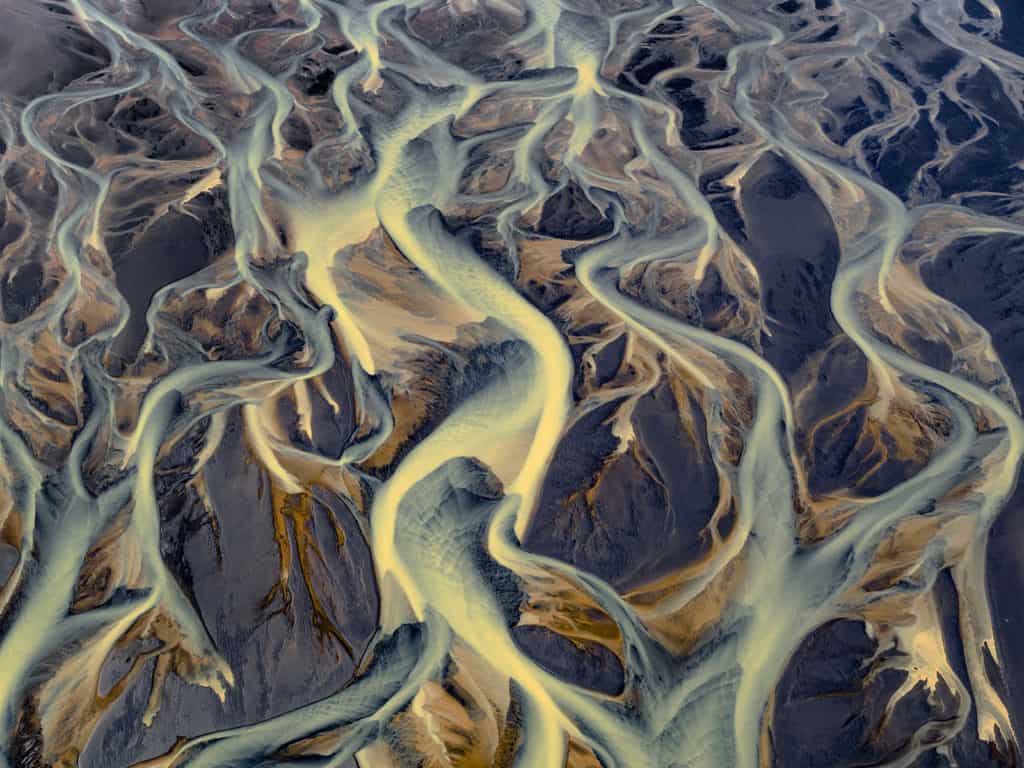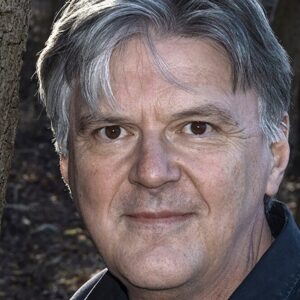
Nikon D850 with Zeiss Otus 28mm lens. f4,0 at 1/1000 sec. ISO 100.
I was never meant to be flying. Ever since I was a child, I have suffered from motion sickness. Even going by bus was a challenge for me when I was young. I always needed to sit in the far front of a bus in order not to vomit. In 1995, during my first visit to Iceland, I discovered a book with aerial photographs of Iceland by German photographer Klaus Francke. I was blown away by the Icelandic landscape’s colours and complexity.
I did not quite believe the authenticity of the colours, though. I thought that must be some technical mumbo jumbo hidden behind these extraordinary colours. Such yellow, orange and red colours could simply not exist. Must the secret be perhaps using infrared film? This book made me eager to go back to Iceland again and try some aerial shooting myself, but how the heck should I be able to do it with all the motion sickness problems in my genes? It took me five more years before I went back to Iceland.

Hasselblad H3DII-50 with HC 50mm lens. f4,5 at 1/500 sec. ISO 200.
In August 2000, with a triple dose of anti-motion sickness pills in my veins, I was finally sitting in a Cessna 172 Skyhawk looking down on the Icelandic landscape. Believe it or not, these surreal colours existed. Due to the high iron content in the volcanic soil and exposure to water, it transforms into iron oxide. Hence these rusty colours.
On top of these surreal colours, the flows of the Icelandic rivers were more complex than anything else I had ever seen before. Not only the fantastic colours and the complex river flows, but I also had an extra buzz from the side-effect of the pills. I saw triple objects of everything down below and bright objects remained on my retina several seconds after I first saw them, like watching a rock concert on an old TV. Being a lover of chaos photography, however, I was hooked, and trying to balance these abstract landforms in the viewfinder became an addiction.

Hasselblad H6D-100c with HC 28mm lens. f 5 at 1/500 sec. ISO 100.
I have now flown every year since 2000 and used several pilots. I have vomited in the air twice and sometimes have had to be picked up by car out in the country due to disastrous air sickness. The best Cessna pilot I ever had refused to fly with me again for this reason. Despite these problems, I have continued to fly, and I have found a complete cure for my problem. I use a small patch called Scopoderm behind my ear. I put it on the day before I fly, and 12 hours later, I am Superman without any problems.
Today, 22 years after my first flight, I have flown 150 hours total over Iceland. Most of the time in high-winged Cessnas, but in recent years also in helicopters. When I fly, I am very concentrated on composition. By moving the camera around in all directions, I try to find a good balance in the framing. I pay special attention to the corners of the frame, and when these are in harmony, I make the photograph. Most of the time, I try to avoid horizons in my aerials, which helps to make them more abstract. An aerial with a horizon easily becomes a postcard type of photograph; easy to digest but with very little personality.
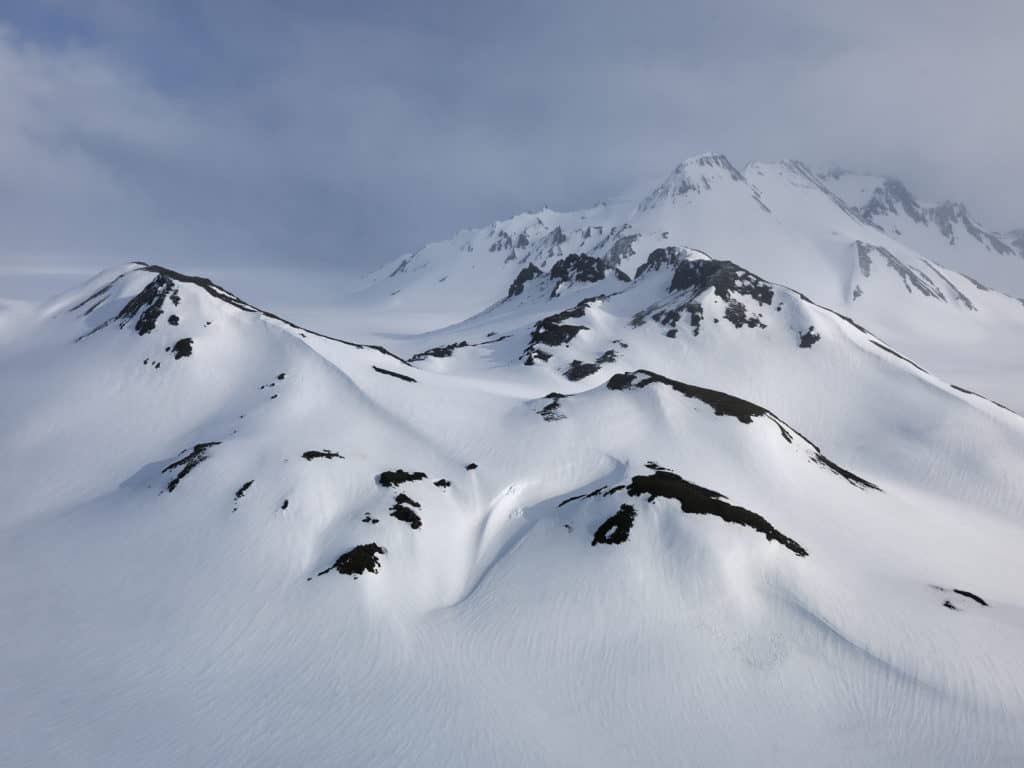
Hasselblad H3DII-50 with HC 50mm lens. f 8 at 1/800 sec. ISO 100.
Including a horizon and a sky reveals the abstraction and proportions of the landscape. I find it interesting not to reveal the scale and leave the viewer with something to wonder about. People don’t always need to understand my photographs. The only time I include the horizon is when photographing mountains, as I believe it is relevant for this subject. I also try to avoid blue skies since I think it makes the images look too sweet. A cloudy sky gives the image a more serious character.
My shooting style is very different depending on my choice of aircraft. I tend to shoot almost straight down from a fixed-winged airplane, and from a helicopter, I tend to shoot more with an angle towards the landscape under me. Shooting from an airplane is also far more tricky than from a helicopter. I used to make a comparison with clay pigeon shooting. You have to be quick and precise simultaneously to get what you want. At first, it seems impossible, but with some practice, you can get stunning images even from a fix-winged airplane; the key is to position the aircraft.
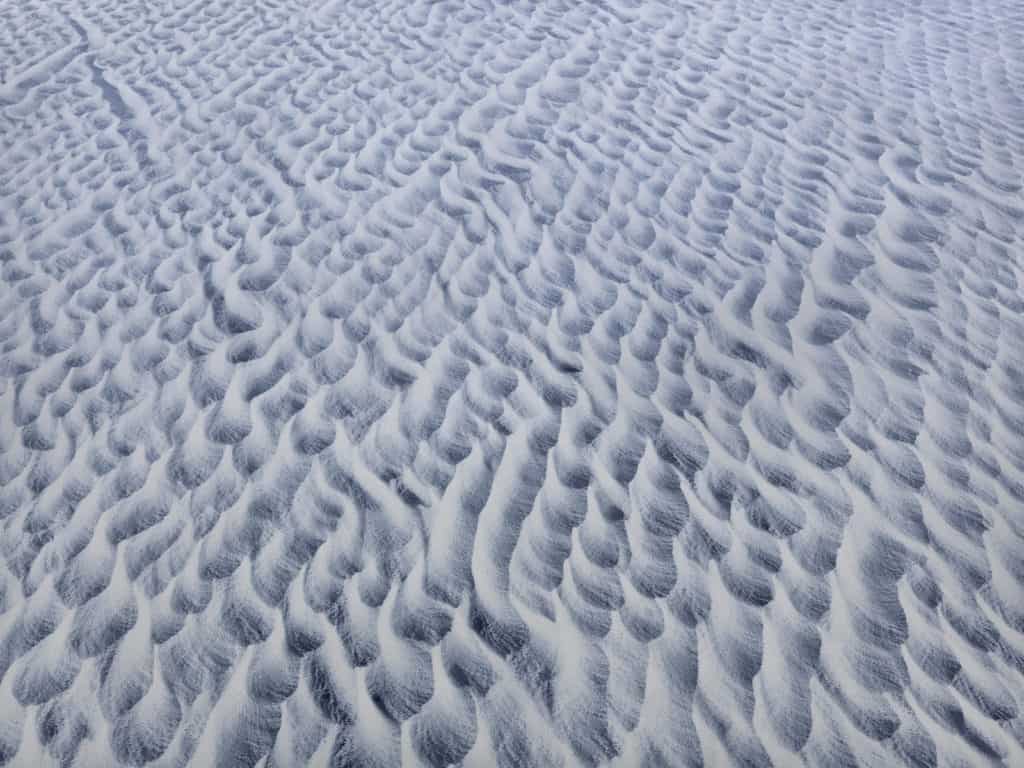
Hasselblad H3DII-50 with HC 50mm lens. f5,0 at 1/500 sec. ISO 200.
With a helicopter, this is a piece of cake, but with an airplane, you need to develop a special technique where you fly to the left of the object you want to shoot and just about when you are 90 degrees to the side of it you tell the pilot to make a sharp turn right. You complete a full 360-degree turn over the landscape you want to photograph, and you shoot almost straight down. You will then get the object under you in all kinds of light: front light, sidelight, and backlight. This is good since you get different expressions of the same landscape.
The helicopter shooting is far less demanding, like flying from A to B to C, etc. You can even fly backward when needed. The downside is the cost. In Iceland, the cost is 4-5 times higher for a helicopter than for a Cessna. The yield of good images, however, stands in the same proportion. You get far more well-composed images from a helicopter than from a Cessna. You can also fly as low as you want.
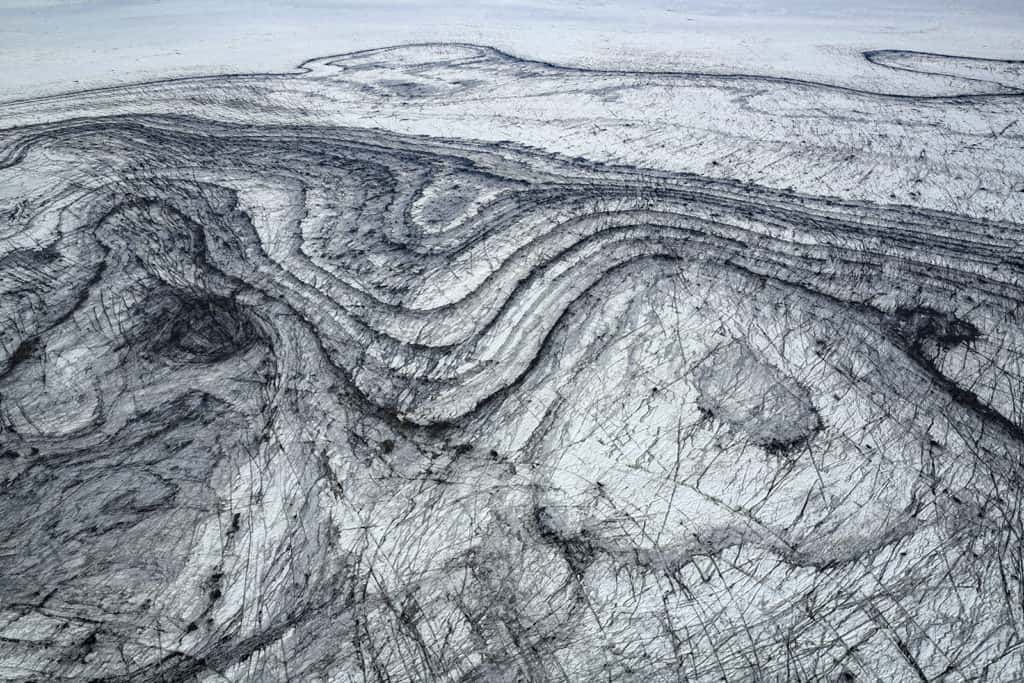
Nikon D850 with Zeiss Otus 28mm lens. f5,6 at 1/800 sec. ISO 64.
With an airplane, you need to fly at least 600 ft. over the ground in order to get sharp images. And since you travel 100 km/h or faster, you, therefore, need a very high shutter speed to freeze the motion. I recommend using a 1/1000 sec. as a rule of thumb. Helicopters, on the other hand, tend to vibrate, also forcing you to need a fast shutter speed, though you can usually get away with a 1/500 second. These recommendations are for wide-angles to standard focal lengths. If you are using longer lenses, you need faster shutter speeds.

